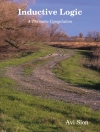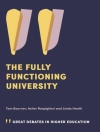What more is there in and for science education to do in terms of researching science lessons? A lot, the author suggests, if research turns away from studying science education extracting social facts using special methods, which journal articles require to state, to studying the work and methods by means of which participants themselves create their structured world of science lessons. This book presents, with concrete materials from an inquiry-oriented physics course, a way of doing science education research that radically differs from existing approaches. This book articulates this approach for a science education audience, where this approach is by and large unknown, and where the primary literature is often experienced as impenetrable and as requiring years of work to gain entry. Consistent with this different approach, those materials are used that constitute the way in which the refl exive production of social order is observed by the actors (teachers, students) themselves.
İçerik tablosu
Preface; Glossary; Epigraph; 1 Ethnomethodology in/for Science Education; 2 Glosses and Glossing Practices; 3 The Work of Doing a Change of Plans; 4 Endogenous Production of Order in Science Lessons; 5 In the Midst of the Thickets; 6 Knowledge and (Institutional) Power; 7 The Actor’s Point of View; 8 Planned, Enacted, & Living Science Curriculum; 9 So What (More) Is in It for Science Education?; Appendix A: Transcription Conventions; Appendix B: The Transcripts; References; Index.












